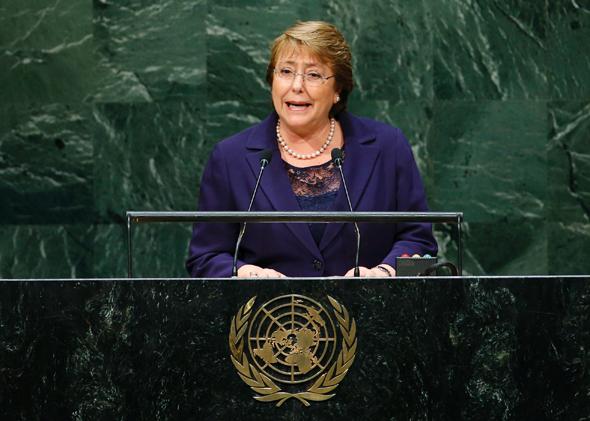This article originally appeared in Inside Higher Ed.
Last fall, Michelle Bachelet was re-elected as president of Chile, on a considerably more radical platform than that which propelled her to the same position eight years earlier. One of her many campaign promises was to make higher education completely free. This is a big deal. It’s not like Germany, where tuition was only ever a derisory sum; in Chile, tuition payments are equal to 2 percent of GDP, a larger percentage than anywhere else in the world, outside South Korea.
So, 10 months on from re-election, how are they getting on with things? The quick answer is: slowly. But not for want of trying.
The heart of the problem is a constitutional provision, dating from the Pinochet era, which guarantees Chileans the freedom to make a living however they want. Effectively, this prevents the government from compulsory nationalization. In higher education, where the vast majority of institutions are private (though some of them receive public funds), this makes effectuating the Bachelet promise difficult. So the government has gone down the route of trying to buy private institutions’ obedience by paying student fees on students’ behalf.
Now, the government isn’t stupid; it’s aware that private universities are likely to respond by raising fees. That’s why they intend to rely on something called a “reference tuition fee.” This is an invention of the Chilean student aid system, which is the only one in the world that takes the Bennett hypothesis (i.e. that student aid encourages cost inflation in higher education) seriously. Basically, Chilean loans programs don’t provide 100 percent of tuition—they only cover a “reference” fee, which ranges from about 80 percent to 100 percent of the actual fee. The problem is that reference fees vary significantly: The fee for a law program at one institution may be vastly different than at another. So the first task to make this work is to create a “standard” reference fee—but this is causing enormous problems. Set it too high and you risk getting fleeced by the institutions; set it too low, and institutions will opt out of the system. It’s not clear that the government will be able to find such a not-too-hot-not-to-cold fee.
Although the government claims to be able to fund the one-time cost of transferring 2 percent of GDP from the private to the public sector via new taxes, some independent observers question whether it will, in fact, be able to fully replace the tuition income institutions will lose. Even if this money can be replaced, it’s not exactly clear where money will come from to fund future system growth or system quality improvement.
More generally, there’s a question about value for money in this policy. Even the proponents of free fees don’t dwell on the promise that the system will become more equitable. Access to higher education and stratification in Chile are already reasonably good: Indeed, their access outcomes look a lot like Canada’s, despite significant fees in both the public and private sector, and the fact that Chile’s (mostly private) system of secondary education creates enormous inequities in outcomes, meaning room for improvement is not great.
Mostly, what proponents of free fees in the Chilean system believe is that “the market should not decide” in higher education. Which, you know, fair enough. Only two problems: 1) Historically, the state tends not to be so hot as a master, either; and 2) in a country that has as many challenges as Chile, is such a goal worth 2 percent of GDP? Honestly?
